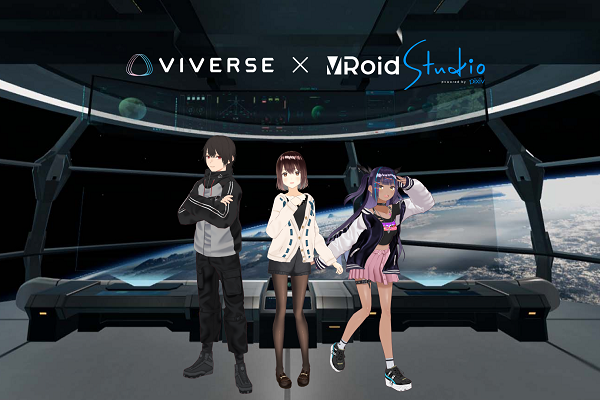HTC Beings Anime-Style Avatars to Its Viverse Metaverse
 HTC will offer visitors to its Viverse metaverse platform the chance to appear as anime versions of themselves thanks to a new partnership with artistic software developer Pixiv. Viverse will integrate Pixiv’s three-dimensional character modeling service VRoid Studio, allowing users to design how they will look and move within its digital space.
HTC will offer visitors to its Viverse metaverse platform the chance to appear as anime versions of themselves thanks to a new partnership with artistic software developer Pixiv. Viverse will integrate Pixiv’s three-dimensional character modeling service VRoid Studio, allowing users to design how they will look and move within its digital space.
Virtual Viverse
Pixiv’s virtual character design services came from demand on its social media platform for creative art as it grew in popularity in Japan, hosting a wide range of artistic products. VRoid launched in 2018, and more than 10,000 3D avatars are made by its global userbase every day. The digital avatars are produced in the VRM file format, which Pixiv and 13 other Japanese developers are promoting as a universal standard through the VRM Consortium. Viverse users won’t be building their avatars with Pixiv just yet, but VRoid users can connect their avatars to the metaverse platform and start using them now. HTC and Pixiv next plan to set up more options for customization of looks and accessories, as well as look for ways to employ the digital beings in other ways on the platform.
“We believe integrating VRoid Avatar with the Viverse system would be excellent news for VRoid users,” Pixiv CEO Shingo Kunieda said.”90% of VRoid Studio users are from different countries outside Japan. We will continue working with Viverse to build a world where people from all over the world can enjoy communication through 3D Avatar.”
Avid Avatars
Customizable virtual beings are a necessity for the metaverse, both for users and as a way to create AI characters to interact with. Companies that can contribute to this tech are seeing a flood of funding and partnership opportunities, such as Ready Player Me and its deal with Adidas, or Inworld, which raised $10 million and is now part of a Disney accelerator program. The competing possibilities for avatar creation don’t preclude some foundational agreements on how to deploy them in the metaverse. HTC and the VRM Consortium are both members of the Metaverse Standards Forum, which many of the biggest players in the metaverse space founded to discuss and set universal standards, like with VRM.
“Avatars are an essential part of the metaverse. They represent a user’s persona and swiftly convey the idea of ‘who I am’ to others,” Viverse president Joseph Lin said. “The partnership with pixiv will rapidly increase the number of virtual characters on Viverse and meet the needs of users who prefer anime and manga styles. Viverse will continue to introduce more unique characters and accessories in the future; with a variety of virtual avatars from reality to imaginary, a metaverse like Star Trek will not be far behind.”
Follow @voicebotai Follow @erichschwartz
Disney Accelerator Taps Virtual Being Startup Inworld AI for ‘Next-Generation Storytelling’ Cohort
Adidas Launches Personality-Based Metaverse Virtual Beings With Ready Player Me








